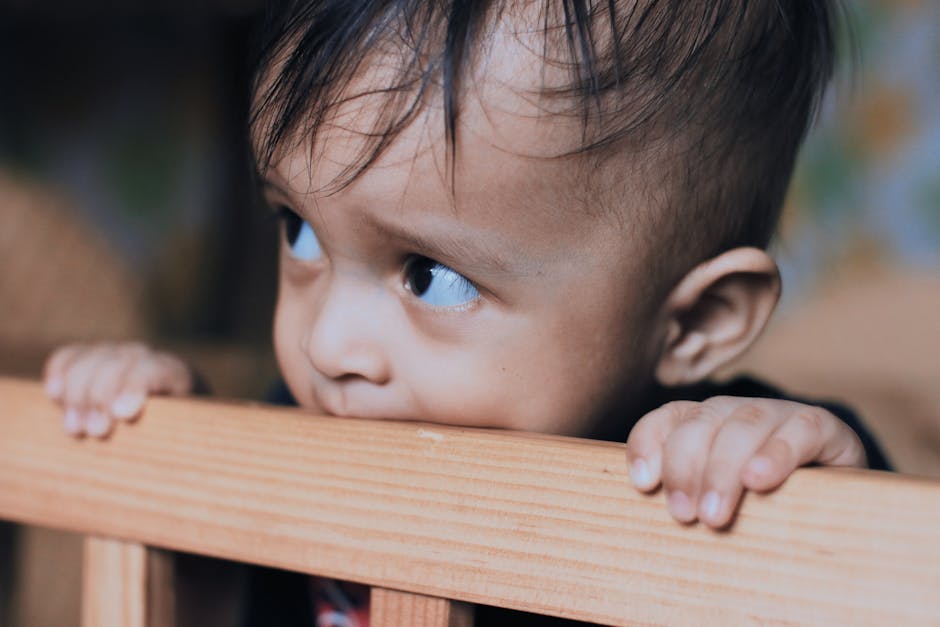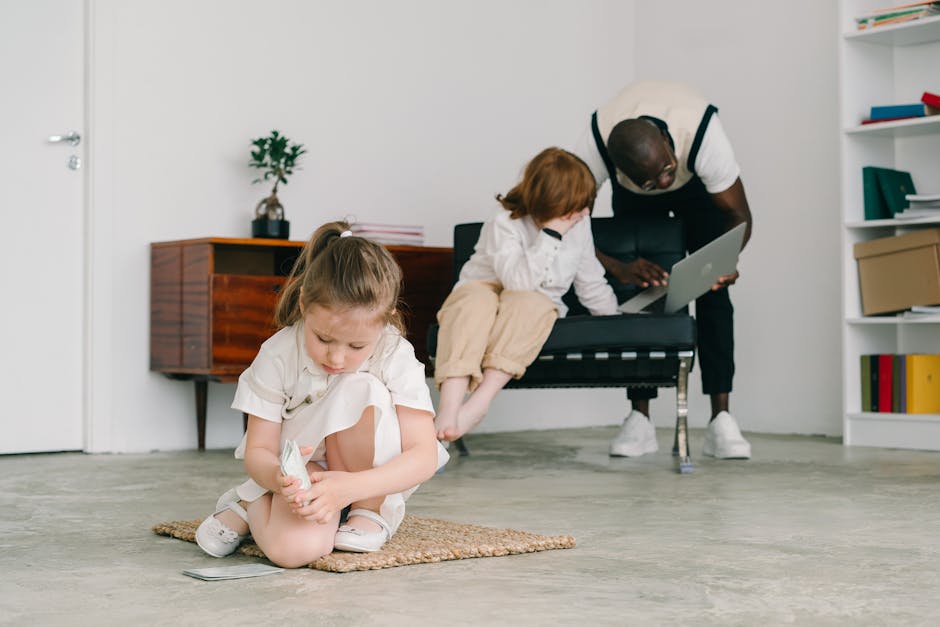No More Teeth Marks! Easy Ways to Stop Child Biting

Understanding Why Children Bite
How to stop biting is a common concern for many parents and caregivers. If you’re looking for quick solutions, here are the most effective strategies:
| Age Group | Quick Solutions |
|---|---|
| Infants (0-1) | Provide teething toys, cold washcloths, calmly say “no biting” |
| Toddlers (1-3) | Firmly say “no biting,” redirect, teach words for feelings, use time-outs (1 min per year of age) |
| Preschoolers (3-5) | Discuss feelings, use books about biting, implement consistent consequences, praise gentle behavior |
| Older children/Adults | Identify triggers, use bitter nail polish, stress balls, or habit replacement techniques |
Most toddlers go through a phase where they bite another child or adult. This behavior typically peaks between ages 1 and 3, with most children outgrowing it by age 3 or 4. Biting is slightly more common in boys and tends to happen most often between the first and second birthday.
When a parent finds their toddler has sunk their teeth into a playmate’s arm or a sibling’s shoulder, it can feel embarrassing and concerning. But understanding the developmental reasons behind biting helps address it effectively.
Young children bite for several reasons:
– Teething pain and discomfort
– Exploration and curiosity (they’re learning cause and effect)
– Limited communication skills (frustration without words)
– Seeking attention (even negative attention is attention)
– Feeling overwhelmed or overstimulated
– Self-defense when feeling threatened
– Imitation of behavior they’ve seen
Biting is normal developmental behavior, not a sign of future aggression or bad parenting. With consistent, calm responses and positive reinforcement, most children quickly learn more appropriate ways to express themselves.

Why Children (and Adults) Bite
As one frustrated parent shared with us, “I was enjoying a sunny afternoon at the playground when I spotted my toddler with teeth embedded in a playmate’s arm. I felt mortified and didn’t know how to handle it!”
This scenario is more common than you might think. Understanding why biting happens is the first step toward knowing how to stop biting effectively.
For babies and toddlers, those little chompers come with several natural motivations:
Teething discomfort can be intense! When new teeth push through sensitive gums, biting provides welcome relief. As pediatric dentist Dr. Sarah Johnson explains, “The counter-pressure from biting helps alleviate the pain of emerging teeth. It’s a natural response, not a behavioral issue.”
Young children also engage in oral-motor exploration – they literally taste-test their world! Those new teeth are fascinating tools worth experimenting with.
When words don’t come easily, frustration and limited language skills can lead to biting. Child psychologist Dr. Michael Chen notes, “Biting can be a primitive form of communication when words aren’t yet available.” Imagine having big feelings but no vocabulary to express them!
Children also quickly find that biting gets an immediate, dramatic reaction – making it perfect for attention-seeking. Even negative attention feels rewarding to a child craving connection.
Some little ones bite when experiencing sensory overload – their developing nervous systems simply can’t process too much stimulation. Biting becomes a coping mechanism when environments feel overwhelming.
Children are also natural scientists testing cause-and-effect. “What happens if I bite?” is a legitimate experiment in their eyes!
Biting behaviors don’t always disappear with age. Older children and adults may develop:
Nail biting due to anxiety, boredom, or intense concentration
Lip biting as a stress response or body-focused repetitive behavior
Anxiety-driven biting of cheeks, lips or nails during stressful situations
Children might also bite through imitation after seeing others do it, or as self-defense when feeling threatened.
Research from the Center for Early Education and Development confirms these triggers are normal developmental patterns, not signs of aggression or poor parenting.
Common Triggers You Can Spot
Being aware of situations that commonly trigger biting can help you prevent incidents before they occur:
Hunger or fatigue reduces children’s self-regulation abilities. A tired, hungry toddler is a toddler primed to bite!
Transitions between activities create stress that may manifest as biting. Moving from playtime to naptime can be particularly challenging.
Crowded settings with too many children in a small space often lead to overstimulation and biting incidents.
Toy disputes frequently precede biting – limited resources lead to primitive conflict resolution techniques.
Separation anxiety can trigger biting when children feel insecure about a parent’s absence.
One daycare provider shared: “We noticed that Jamie always bit other children right before naptime. Once we started offering a quiet activity and snack before the transition, the biting stopped completely.”
Understanding these triggers helps you spot potential biting situations before teeth meet skin – the first step in prevention!
How to Stop Biting – Preventive Playbook
The best approach to biting is prevention. By understanding and addressing the underlying causes, you can often stop biting before it starts.

When my daughter went through her biting phase, I felt completely overwhelmed until I finded the power of prevention. Let me share what works for most families dealing with this challenging behavior.
Anticipate and plan by watching for patterns in your child’s biting incidents. Does it happen when they’re tired? Hungry? Overwhelmed by too many playmates? Once you spot these patterns, you can be proactive. For instance, if your little one tends to bite during afternoon playgroups, consider scheduling these activities earlier in the day when they’re more rested.
Creating predictable routines gives children a sense of security that naturally reduces stress-related biting. When kids know what’s coming next, they feel more in control and less likely to act out with their teeth.
One game-changer for many parents is keeping safe chewing alternatives readily available. “Having a special ‘chewy necklace’ that my daughter could wear at daycare completely transformed our experience,” shared one relieved mom. Teething rings, cold washcloths, or appropriate chew toys give those little chompers something appropriate to bite.
Don’t underestimate the power of crunchy snacks for satisfying that urge to bite. Plain crackers, carrot sticks (for older toddlers), or apple pieces provide that satisfying resistance that many children crave.
Helping children put their feelings into words through emotion coaching is truly effective. When you see frustration building, try saying, “I see you’re feeling angry. You can say ‘I’m mad’ or ‘I need help’ instead of biting.” This simple technique gives children the tools they need to express themselves without using their teeth.
Children are watching us constantly, so model calm responses during stressful situations. Your little one learns emotional regulation primarily by observing how you handle big feelings. Taking a deep breath before responding to challenging behavior shows them healthy coping strategies.
Reading social stories about biting helps children understand expectations in a non-threatening way. Books like “Teeth Are Not for Biting” by Elizabeth Verdick can become a regular part of your reading rotation during biting phases.
Never underestimate the power of positive reinforcement. When you catch your child using words instead of teeth, make a big deal about it! “I noticed you used your words to ask for a turn instead of biting. That was such a kind choice!”
How to stop biting before it starts
Early intervention makes all the difference in preventing biting habits from becoming entrenched. Stay alert for warning signs like staring intently at another child’s arm or opening the mouth wide, then gently redirect your child to another activity before teeth meet skin.
Giving children appropriate choices throughout the day reduces frustration dramatically. Something as simple as “Would you like the red cup or the blue cup?” provides a sense of control within safe boundaries.
Regular sensory breaks throughout busy days prevent the overstimulation that often leads to biting. A quiet corner with books or sensory toys gives children space to reset when feeling overwhelmed.
Practice “gentle hands” with stuffed animals or dolls, showing your child how to touch appropriately. “We touch our friends gently, like this” paired with a demonstration helps them understand the difference between harmful and helpful touch.
One mother shared her success story: “We started using a ‘biting book’ with our son, reading it every night before bed. Within a week, he started saying ‘no bite’ to himself when he felt frustrated instead of actually biting.”
Partnering With Teachers & Caregivers
When it comes to how to stop biting, consistency across environments is absolutely crucial:
Establish consistent rules between home and childcare settings. When everyone responds to biting in similar ways, children learn expectations more quickly.
Consider keeping a daily log tracking biting incidents, including time of day, what happened right before, and who was involved. These patterns can reveal triggers you might otherwise miss.
Schedule regular quick check-ins with teachers to discuss progress and adjust strategies as needed. A united front between parents and caregivers accelerates positive change.
Use shared language across settings, with consistent phrases like “We use our words, not our teeth” to reinforce expectations wherever your child spends time.
A veteran preschool teacher shared this insight: “When we partner with parents on addressing biting, the behavior typically resolves within a few weeks. The key is consistency and positive reinforcement from all adults in the child’s life.”
This challenging phase will pass. With patience and these preventive strategies, you’ll help your child develop healthier ways to express themselves and interact with others.
What to Do Immediately After a Bite
Despite your best prevention efforts, biting incidents may still occur. How you respond in the moment matters greatly:

When little teeth meet skin, your immediate reaction shapes what happens next. Take a deep breath first – your calm response teaches far more than your words.
Look your child in the eye with a serious (but not angry) expression and clearly state, “No biting. Biting hurts.” Keep it simple and direct – young children need clear messages without long explanations in the heat of the moment.
Always tend to the victim first. This natural sequence shows your child that hurting others has consequences – namely, that the hurt person gets the attention. It also models empathy, something you’re trying to teach.
“The day my son bit his playmate at the park, I wanted to disappear from embarrassment,” shares Monica, mother of a 2-year-old. “But I forced myself to stay calm, comfort the other child, and then address my son’s behavior without making a huge scene. The other mom actually thanked me later for handling it so well.”
Once you’ve comforted the bitten child, turn to your little one with firm kindness: “I can see you’re feeling frustrated, but biting hurts. We don’t bite our friends.” This acknowledges feelings while setting clear boundaries.
For toddlers and preschoolers, a brief time-out (about one minute per year of age) helps create a cause-and-effect connection. No lengthy lectures needed – the simple sequence of bite → brief separation makes the point effectively.
After the situation calms down, guide your child back to positive interaction. This shows that relationships can heal after mistakes – an important life lesson.
Cleveland Clinic pediatrician Dr. Emily Torres puts it perfectly: “The key is remaining neutral while delivering the message. Dramatic reactions can inadvertently reinforce biting behavior, as children crave attention—even negative attention.”
First-Aid Basics & Safety
When teeth break skin, proper wound care becomes your priority:
Immediately wash the area thoroughly with soap and warm water. This simple step dramatically reduces infection risk and should be done even for seemingly minor bites.
If bleeding occurs, apply gentle pressure with a clean cloth or bandage until it stops. Most child bites won’t bleed extensively, but proper pressure helps the healing process begin.
Keep an eye on the wound over the next few days. Signs of infection include increasing redness, swelling, warmth, or any discharge. If these appear, don’t wait – seek medical attention promptly.
The tetanus status of the bite recipient matters too. If the bite breaks the skin and the victim’s tetanus immunization isn’t current, a healthcare provider might recommend a booster shot. This is especially important for deeper bites.
“Human bite wounds can harbor significant bacteria,” warns emergency physician Dr. James Miller. “Even seemingly minor bites should be cleaned promptly and monitored for infection.”
A daycare teacher with 15 years of experience shared her perspective: “In all my years working with toddlers, I’ve seen many biting incidents. The ones that heal fastest – both physically and emotionally – are those where adults respond calmly and consistently. Children pick up on our energy. When we treat biting as a learning opportunity rather than a catastrophe, everyone recovers more quickly.”
Learning how to stop biting is a process, not an instant fix. Your consistent, calm response to each incident teaches more than any single strategy could accomplish.
Break the Habit: Age-Specific Solutions & When to Seek Help
Every child develops at their own pace, which means the approach to stopping biting behavior needs to match their age and understanding. Let’s explore what works best at different stages:
Toddlers & Preschoolers: How to stop biting for good
When my friend’s two-year-old went through a biting phase, she found that consistency was her greatest ally. “I wanted to react differently each time because my emotions were all over the place,” she told me, “but keeping my response calm and identical each time finally got through to him.”
Calm, consistent responses truly are the foundation of success. When a child bites, your reaction should be the same every single time – firm but not angry, clear but not scary.
For toddlers, implementing brief time-outs (just one minute per year of age) helps create a moment of reflection. This isn’t about punishment but about creating a pause button on the behavior.
Many parents find that role-play scenarios work wonders. Using stuffed animals or puppets to act out situations where a character feels frustrated but chooses words instead of biting can be both fun and educational.
Books like “Teeth Are Not for Biting” become powerful teaching tools because they address the issue in a way children can understand and relate to. Reading these stories regularly, not just after incidents, reinforces positive behavior.
Remember to catch them being good! When you notice your child getting frustrated but using their words instead, offer specific praise for progress: “I saw how mad you were when Sam took your truck, but you used your words instead of biting. That was such a grown-up choice!”

Older Kids & Adults: How to stop biting for good
Nail biting, lip chewing, and other self-directed biting behaviors often stem from entirely different causes than toddler biting. For these habits, awareness is the first step toward change.
Starting a trigger journal can be eye-opening. “I never realized I only bit my nails during work meetings until I tracked it for a week,” shared one reader who overcame a lifelong habit. “Once I knew when it happened, I could prepare by bringing something else to do with my hands.”
For nail biters, products like bitter-tasting nail polish create an immediate negative consequence that helps break the automatic habit loop. The unpleasant taste serves as a physical reminder of your commitment to stop.
Stress balls or fidget toys provide your hands with an alternative activity. The key is keeping these tools accessible in the places where biting typically occurs – your desk, your car, or beside your favorite chair.
Mindfulness practices help you recognize the urge to bite before it happens. Even a simple practice of pausing to take three deep breaths when you feel the impulse can create space between the urge and the action.
For persistent cases that significantly impact quality of life, cognitive behavioral therapy (CBT) offers structured support. This approach helps identify underlying anxiety triggers and builds new response patterns. Research from the Body-Focused Repetitive Behavior Foundation shows that professional help can be particularly effective for chronic lip biting.
Strategies That Backfire – Avoid These!
Sometimes our instinctive responses can actually reinforce the very behaviors we’re trying to stop. Here are approaches that seem logical but often backfire:
Biting back might seem like a way to teach empathy (“see how it feels”), but it sends a deeply confusing message. Children learn primarily through observation, so this actually teaches that biting is sometimes okay.
Harsh reactions like yelling or severe punishment can increase a child’s anxiety and stress levels, which are often triggers for biting in the first place. This creates a negative cycle that’s hard to break.
Shaming or labeling a child as “a biter” can become a self-fulfilling prophecy. Children tend to live up to the identities we assign them, whether positive or negative.
Excessive attention, even negative attention, can be rewarding for children seeking engagement. Dramatic reactions with lots of discussion can inadvertently make biting seem like an effective way to get noticed.
Forced apologies rarely accomplish their intended purpose. Young children often don’t understand the concept of sincere remorse, and pushing for “sorry” can create resentment rather than learning.
| Helpful Responses | Harmful Responses |
|---|---|
| “Biting hurts. We use gentle touches.” | “You’re such a bad boy for biting!” |
| Brief, calm time-out | Lengthy punishment or isolation |
| Teaching alternative expressions | Biting the child back |
| Comfort victim first | Forced, insincere apologies |
| Consistent consequences | Inconsistent or extreme reactions |
When to Call a Professional
While biting is typically a normal developmental phase that children outgrow with proper guidance, certain situations signal a need for additional support:
Persistent behavior that continues beyond age 4 despite your consistent interventions may indicate deeper challenges that benefit from professional insight.
The severity of injuries matters too. If bites regularly break skin or cause significant harm, this suggests an intensity that warrants evaluation.
Watch for accompanying aggression – when biting appears alongside hitting, kicking, and other aggressive behaviors, it could point to broader emotional regulation difficulties.
Developmental concerns such as delays in language or social skills might be connected to biting behavior. Sometimes children bite because they lack other ways to express themselves.
Pay attention to potential mental health indicators like excessive anxiety, unusual difficulty with transitions, or pronounced sensory sensitivities, as these might require specialized approaches.
Child psychologist Dr. Lauren Williams offers this reassurance: “Most children respond well to consistent, appropriate interventions within a few weeks. If you’ve diligently applied these strategies for 4-6 weeks without improvement, or if the biting seems driven by unusual anxiety or sensory issues, it’s time to consult your pediatrician or a child development specialist.”
With patience, consistency, and the right approach for your child’s age and situation, biting behavior can be effectively addressed – giving both you and your child the tools for better communication and emotional expression.
Conclusion
When it comes to biting behavior, you’re not alone in this parenting challenge. Countless families have steerd these choppy waters before you, and with consistency and patience, your little one will move beyond this phase too.
Biting is indeed a normal developmental milestone for many children. As one mom shared with us, “I thought my daughter would never stop biting her friends at daycare. But after a month of consistent responses and lots of practice with ‘gentle hands,’ she suddenly started using her words instead. The relief was enormous!”
Here’s what truly works when tackling how to stop biting:
Understanding the “why” behind each bite gives you powerful insight. Is it teething pain? Frustration? Sensory exploration? Each cause requires a slightly different approach.
Prevention is your best friend. By spotting triggers like hunger, fatigue, or crowded spaces, you can often redirect before teeth meet skin. One preschool teacher told us, “We completely eliminated biting incidents during our transition times by simply giving each child a chewy snack beforehand.”
When bites do happen (and they will), your calm, consistent response teaches volumes. Children learn from how we react, not just what we say. Taking a deep breath before responding might be the most important step in your biting intervention plan.
Teamwork makes the dream work. When parents, grandparents, daycare providers, and babysitters all respond to biting with the same approach, children learn appropriate behavior much faster.
At Best Pet News, we see fascinating parallels between helping children and puppies through their biting phases. In both cases, consistency, positive reinforcement, and redirection work wonders! The same patience that helps your toddler learn not to bite friends will serve you well when teaching your puppy gentle mouth manners.
We’d love to hear your experiences in the comments below. Did you find a creative solution that worked for your family? Are you currently in the thick of it and need some encouragement? Our community of parents and pet lovers is here to support you.
This challenging phase will pass. One day soon, you’ll realize it’s been weeks since the last biting incident, and you’ll barely remember when it was such a pressing concern. With your loving guidance, your child is learning valuable lessons about communication, emotional regulation, and respecting others’ boundaries—skills that will serve them throughout life.
For more insights on navigating behavioral challenges with the little ones in your life (both human and furry), check out our article on Understanding Pet Behavior.


